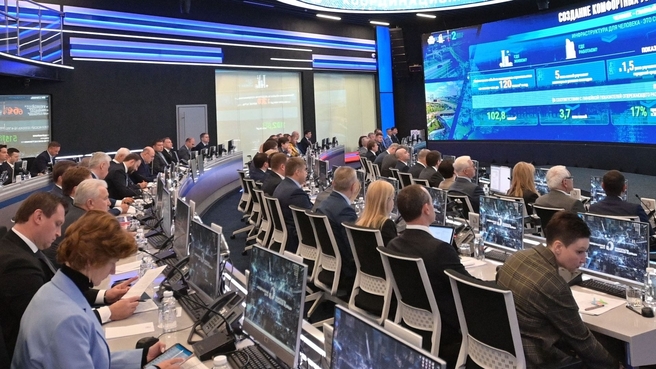Mikhail Mishustin’s opening remarks:
Good afternoon, colleagues,
Today, we will review issues with the national infrastructure and its
earlier than planned development. As the President has noted, this is a very
important condition for expanding business, investment activity and creating
jobs.
The Government is proceeding with large, ambitious plans to improve the
image of cities and towns, and we are building housing, kindergartens, schools,
hospitals, sport facilities, and leisure and recreation centres. We are
modernising utility systems and upgrading the road network.
It is also important to focus on the Donetsk
and Lugansk people’s republics and the Kherson
and Zaporozhye regions. We need to create city environments there under the
same standards as the rest of Russia.
New financial tools, including infrastructure bonds, and budgetary and
special treasury loans, were launched at the President’s initiative to help the
regions accomplish all these goals. These important tools are proving quite
effective.
State support measures and a systematic approach have allowed the
construction industry to see high growth rates in the past few years despite
the external restrictions and sanctions. In the first seven months,
construction has increased by almost 9 percent. The construction industry and
related sectors, and the housing utilities sphere, added over 13 percent to the
national GDP.
Certainly, the Government prioritises measures to improve living
conditions for Russian citizens. Over 70 million square metres of housing have
opened for occupancy since January. This is slightly more than January 2022, a record-breaking
year.
We also continue to develop the road infrastructure at a good pace. This
is an important factor in regional economic growth, for invigorating business
activity, forming new logistics routes and expanding tourism. The highway
infrastructure also brings cities closer and connects people and businesses.
To accomplish this, we are laying basic routes across the country. A
section of the M-12 Vostok route opened recently, with the President taking
part in the ceremony. The route links Moscow
with Arzamas, and it is to reach Kazan
by December. From there, it will extend towards Yekaterinburg, eventually
reaching Tyumen.
The Rossiya high-speed highway, to be built as a full motorway, will eventually
link St Petersburg with Vladivostok.
This year, we are planning to open over 1,000 kilometres
of federal roads, and there are plans to resurface about 3,500 km more. The share
of high-quality regional motorways will reach 52 percent, exceeding the planned
targets. We will accomplish this by resurfacing almost 26,000 km of secondary
highways.
Regarding the new Russian territories, we will resurface about 1,200 km of new roads
there. This will make it possible to deliver more essential goods and other cargo
and to resume bus traffic where it was disrupted.
Of course, the Government is expecting businesses to take a very active
part in implementing these plans. Addressing Russian businesspeople at the
Eastern Economic Forum, the President reiterated that it was more reliable and
better to invest in Russia.
This concerns large and ambitious infrastructure projects, as well as local
projects for urban development and tourism, which are no less important.
At our spring strategic session, we set forth a number of high-priority
targets for the construction industry. Today, I suggest we discuss the
fulfilment of these in greater detail, and update our plans. We also need to
propose additional solutions that primarily aim to improve the quality of life
for Russian citizens where needed.









